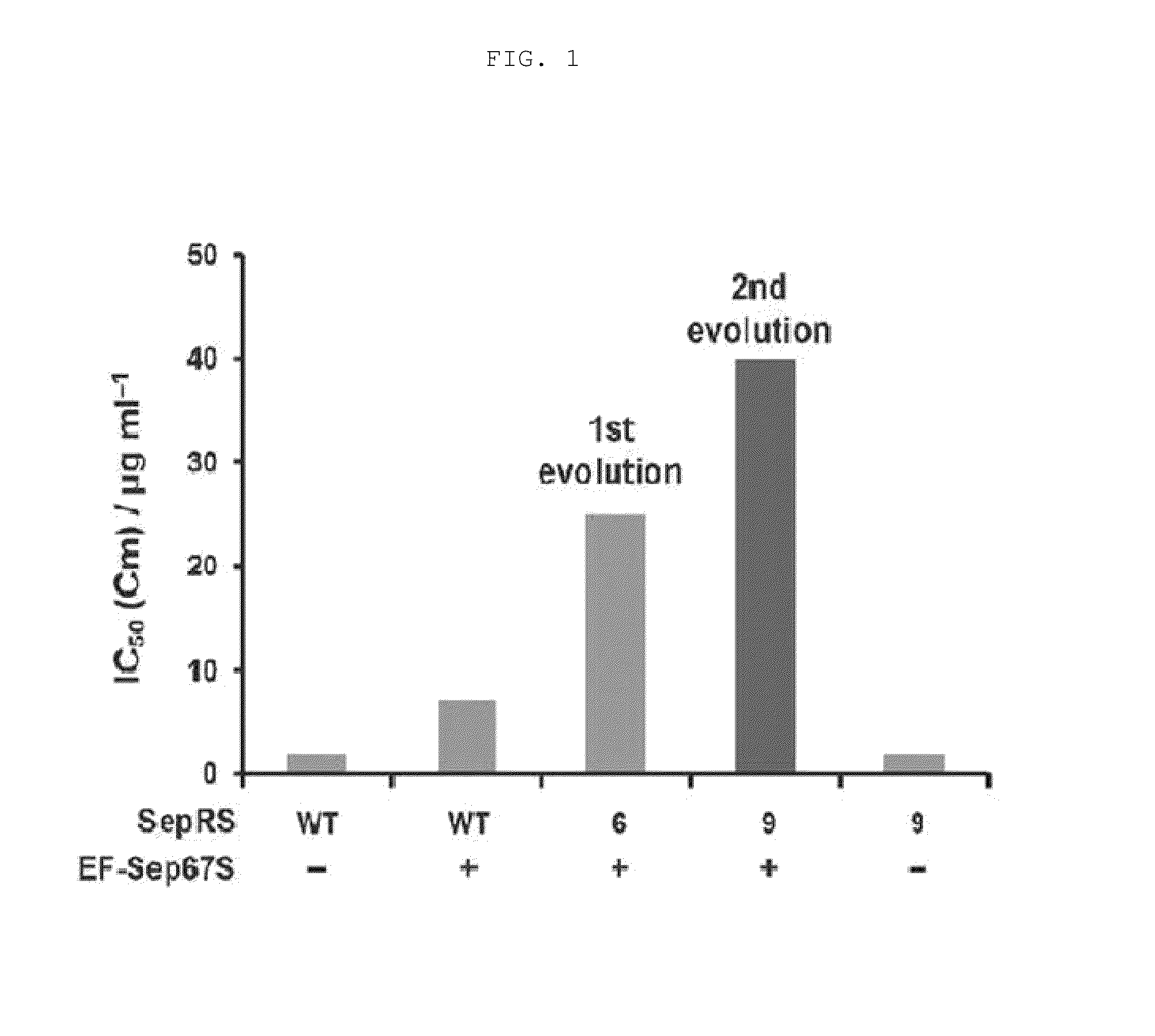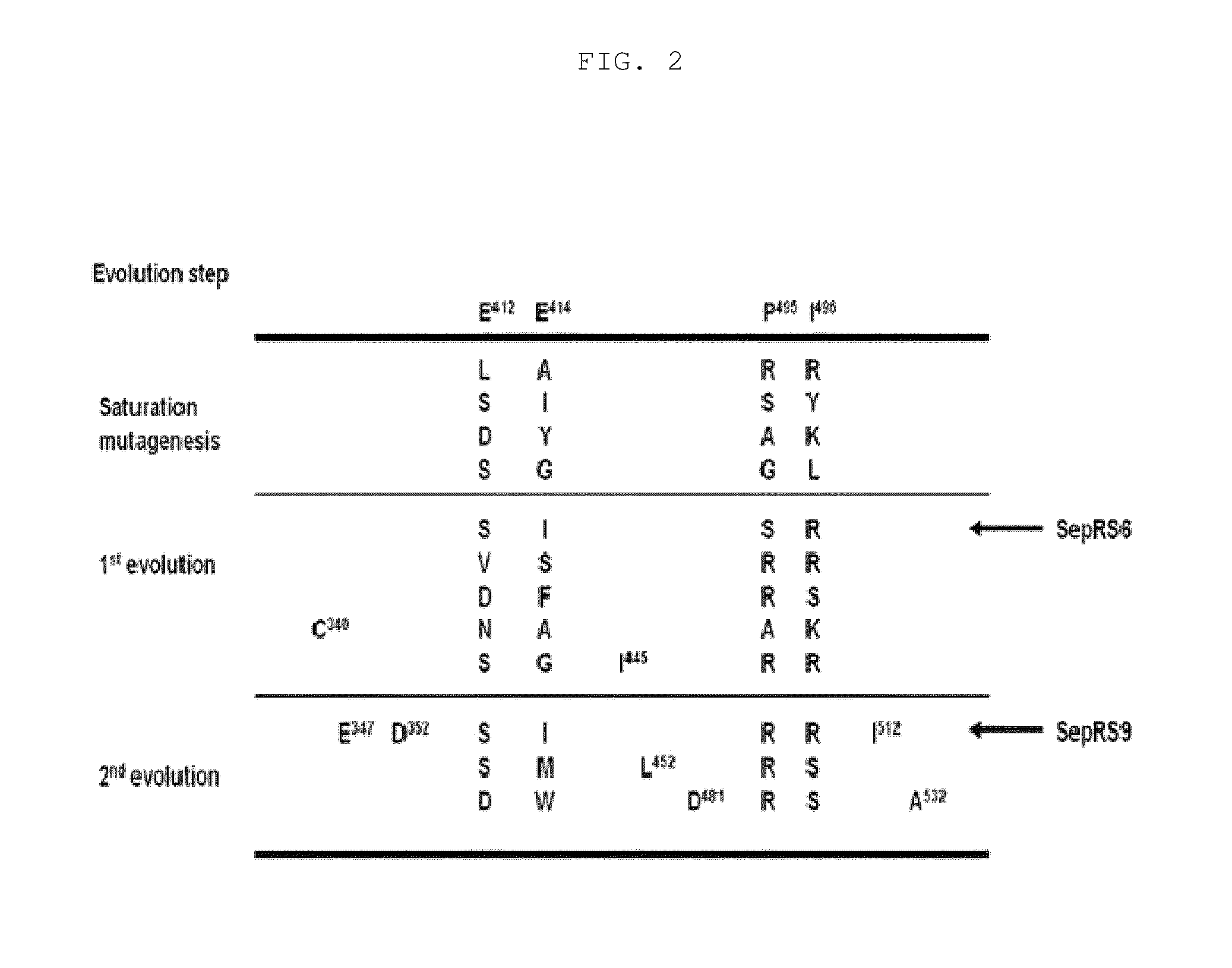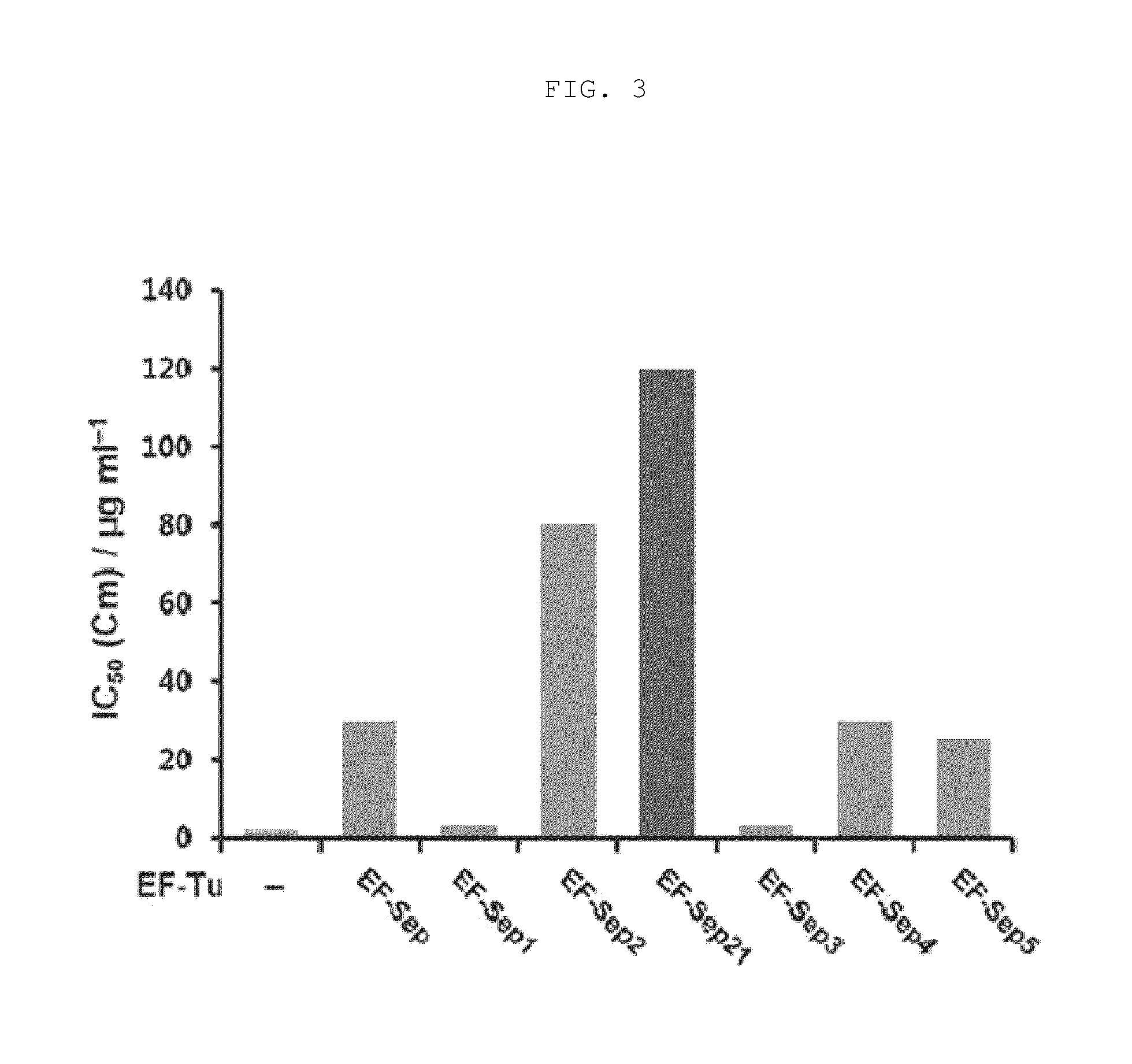Method for producing phosphoserine incorporated proteins by using SepRS mutants and EF-Tu mutants
a phosphorylated protein and seprs technology, applied in the field of producing phosphorylated proteins, can solve the problems of difficult to produce a large amount of proteins, low efficiency of phosphorylated protein production, and inability to produce phosphorylated proteins, etc., and achieve high efficiency
- Summary
- Abstract
- Description
- Claims
- Application Information
AI Technical Summary
Benefits of technology
Problems solved by technology
Method used
Image
Examples
example 1
Construction of Gene Library of SepRS and EF-Tu Mutants
[0081](1) Construction of SepRS Mutants
[0082]Identification of SepRS having activity of incorporating phosphoserine (Sep) with higher efficiency in E. coli was performed using molecular evolution technology. According to the structure of a SepRS:tRNACys complex from Archaeoglobus fulgidus (R. Fukunaga, et al., Nat Struct Mol Biol 2007, 14, 272), four amino acids (glutamic acid (Glu) at position 412, glutamic acid (Glu) at position 414, proline (Pro) at position 495 and isoleucine (Ile) at position 496) were selected from the anticodon binding site of Methanococcus maripaludis SepRS (Mmp SepRS) and subjected to molecular evolution. Before performing the molecular evolution, for each library construction, PCR for changing the surrounding nucleotides to increase the GC content compared to the AT content in the wobble position of the codon was performed. PCR was performed using Mmp SepRS of SEQ ID NO: 17 as a template and the primer...
example 2
Verification of Intracellular Sep-Incorporating Activity of SepRS and EF-Tu Mutants
[0096]Each of the vectors pKD-SepRS, pKD-SepRS-EFSep, pKD-SepRS9-EFSep, pKD-SepRS-EFSep21 and pKD-SepRS9 was transformed into an E. coli Top10ΔserB strain having pCAT112TAG-SepT, and the intracellular aminoacylation activity of the vectors was measured using the CAT assay technique as described above. As a result, it was shown that the vector comprising both the SepRS9 and EF-Sep21 mutants constructed in the present invention had the highest intracellular Sep-incorporating activity (see lane 4 in FIG. 5).
example 3
Protein Production Ability of SepRS and EF-Tu Mutants Verified by Purification of Phosphorylated Histone H3
[0097]The Xenopus laevis histone H3 gene having a His6-tag and a TEV protease recognition sequence at the N-terminus was cloned between the BamHI and AscI sites of a PCDFDuet vector (Novagen) to make pCDFDuet-H3 wt. Then, serine at amino acid position 10 of the gene was substituted with an amber stop codon (UAG) to construct a pCDFDuet-H3S10TAG vector. In addition, the recombinant vector pETDuet-SepRS9-SepT having tRNASep inserted between the NotI and BglII sites of pETDuet(Novagen) and SepRS9 inserted between the NcoI and SacI sites was constructed using the following primers:
[0098]
SEQ ID NO: 48:DuetF, 5′-GGG ATC TCG ACG CTC TCC C-3′;SEQ ID NO: 49:DuetSepTR, 5′-CCC CTA GAC TAC CCC GGC CTTAAC TAA TAT ACT AAG ATG-3′;SEQ ID NO: 50:SepTF, 5′-GCC GGG GTA GTC TAG GGG-3′;SEQ ID NO: 51:SepTBglR, 5′-TGC CTG AAC TAG ATC TTG GAGCCG GGG GTG GGA T-3′.
[0099]In order to express the histone H...
PUM
| Property | Measurement | Unit |
|---|---|---|
| concentration | aaaaa | aaaaa |
| OD | aaaaa | aaaaa |
| pH | aaaaa | aaaaa |
Abstract
Description
Claims
Application Information
 Login to View More
Login to View More - R&D
- Intellectual Property
- Life Sciences
- Materials
- Tech Scout
- Unparalleled Data Quality
- Higher Quality Content
- 60% Fewer Hallucinations
Browse by: Latest US Patents, China's latest patents, Technical Efficacy Thesaurus, Application Domain, Technology Topic, Popular Technical Reports.
© 2025 PatSnap. All rights reserved.Legal|Privacy policy|Modern Slavery Act Transparency Statement|Sitemap|About US| Contact US: help@patsnap.com



